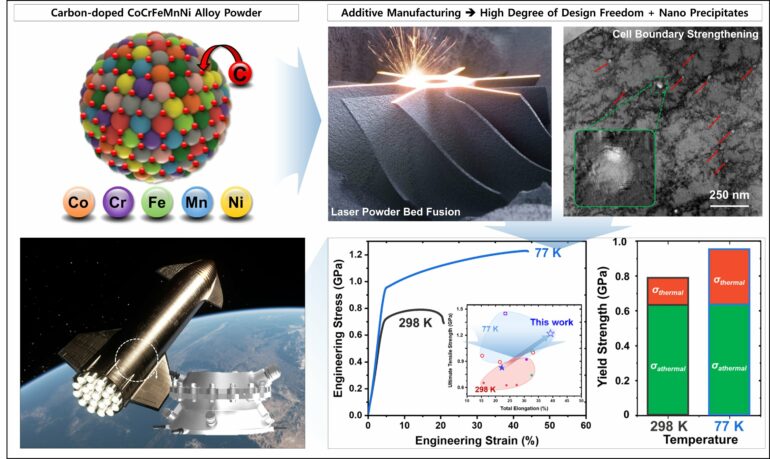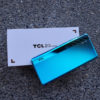A research team has successfully developed a new high-performance metal 3D-printed alloy tailored for space environments. The newly developed alloy demonstrated exceptional mechanical performance at extreme cryogenic temperatures as low as -196°C, proving its high potential for space exploration and extreme environment applications.
The research team, led by Dr. Jeong Min Park from the Nano Materials Research Division at the Korea Institute of Materials Science (KIMS), in collaboration with Professor Jung Gi Kim of Gyeongsang National University and Professor Hyoung Seop Kim of Pohang University of Science and Technology (POSTECH), added a small amount of carbon to the CoCrFeMnNi alloy, which exhibits excellent properties in cryogenic conditions.
The study is published in the journal Additive Manufacturing.
This alloy powder was then processed using the Laser Powder Bed Fusion (LPBF) method, Metal Additive Manufacturing (i.e., Metal 3D Printing) technique.
The technology allows the maximization of the strengthening effect of carbon addition to the alloy via finely distributed nano-carbides at the boundaries of nano-sized cell structure.
As a result, the team achieved a combination of tensile strength (the ability to resist forces) and ductility (the ability to endure deformation before failure) that was over 140% better than carbon-free alloys in cryogenic environments. In particular, the elongation of the alloy is twice as high at 77 K compared to 298 K.
This technology also offers a potential guideline for alloying design in additive manufacturing to produce high-performance products with excellent load-bearing capacity for use in cryogenic applications. Another key distinction of this technology is its ability to fine-control microstructure through additive manufacturing.
This technology can be applied to complex components such as injectors that spray fuel in space exploration rockets, and turbine nozzles that extract energy. It enhances performance and extends the lifespan of parts used in space and other extreme environments. Moreover, since it overcomes the limitations of low-temperature toughness in existing 3D-printed alloys.
Dr. Jeong Min Park, the senior researcher and project leader stated, “This research presents a significant breakthrough in developing new alloys for extreme environments, offering new possibilities. Through 3D printing technology that surpasses the manufacturing limits of conventional space exploration components, we can significantly improve the performance of parts used in space launch vehicles.”
More information:
Haeum Park et al, Cryogenic tensile behavior of carbon-doped CoCrFeMnNi high-entropy alloys additively manufactured by laser powder bed fusion, Additive Manufacturing (2024). DOI: 10.1016/j.addma.2024.104223
Provided by
National Research Council of Science and Technology
Citation:
Enhanced 3D-printed alloy shows high potential for space applications (2024, October 29)



